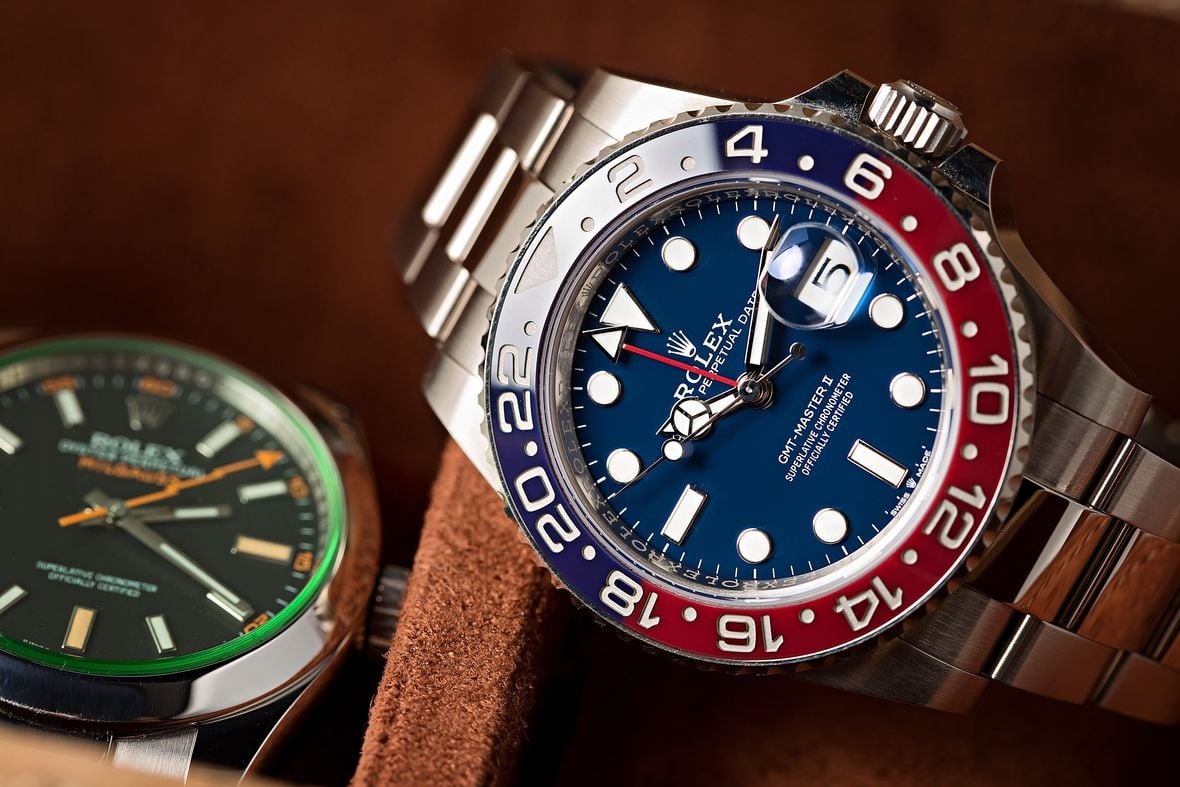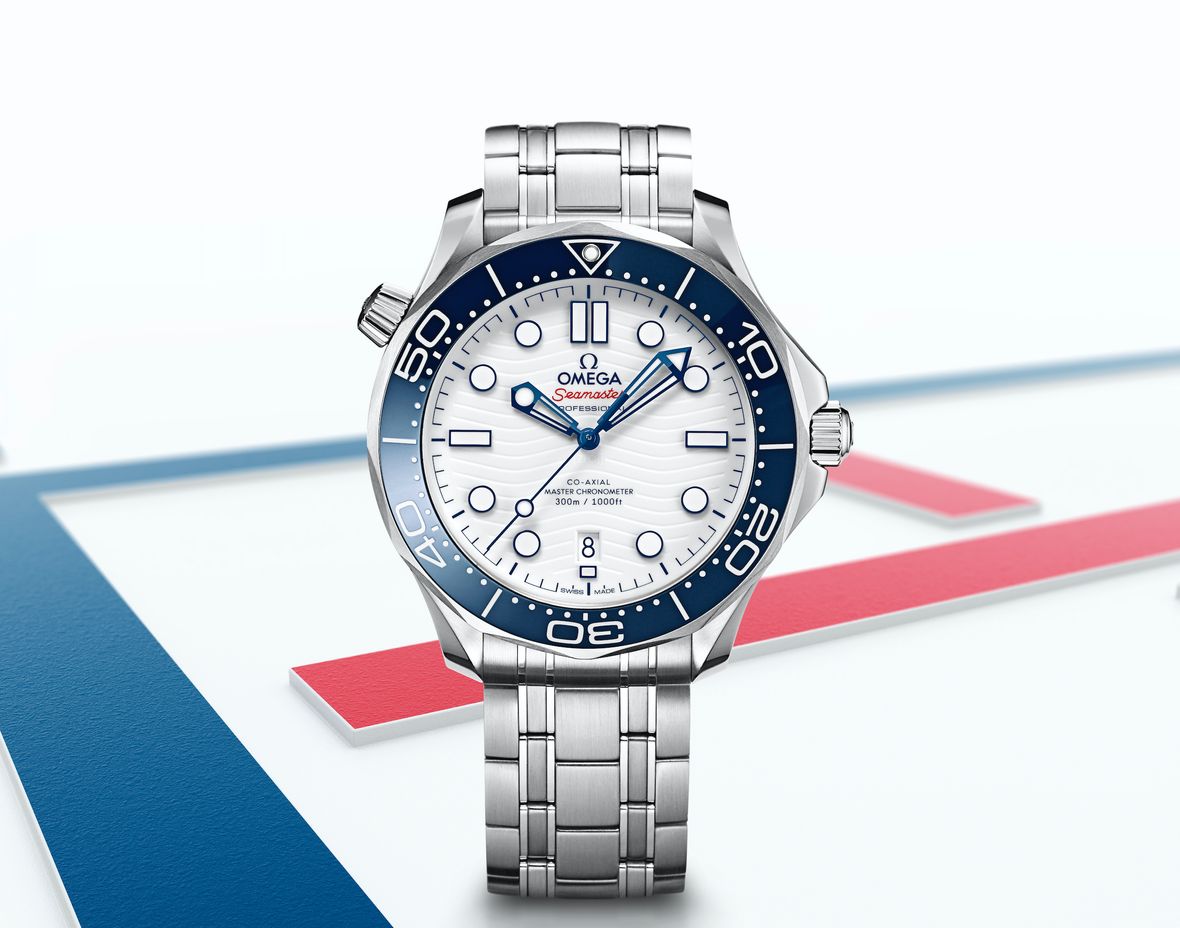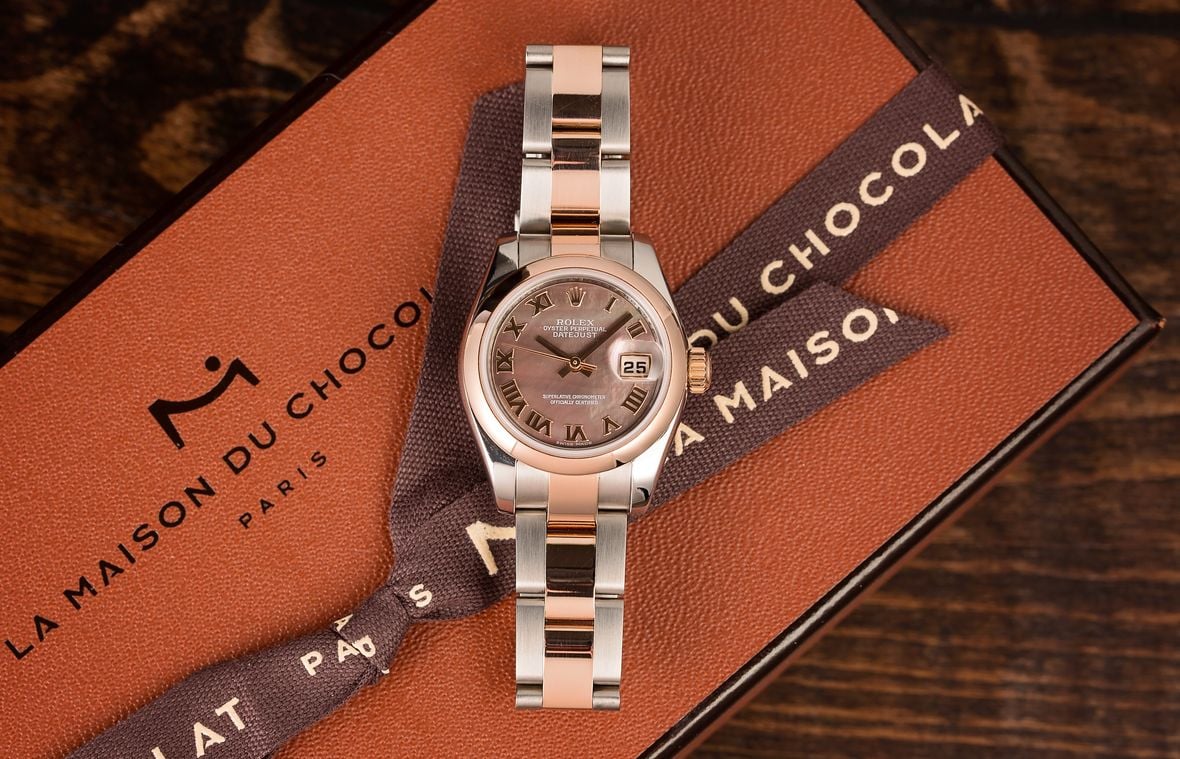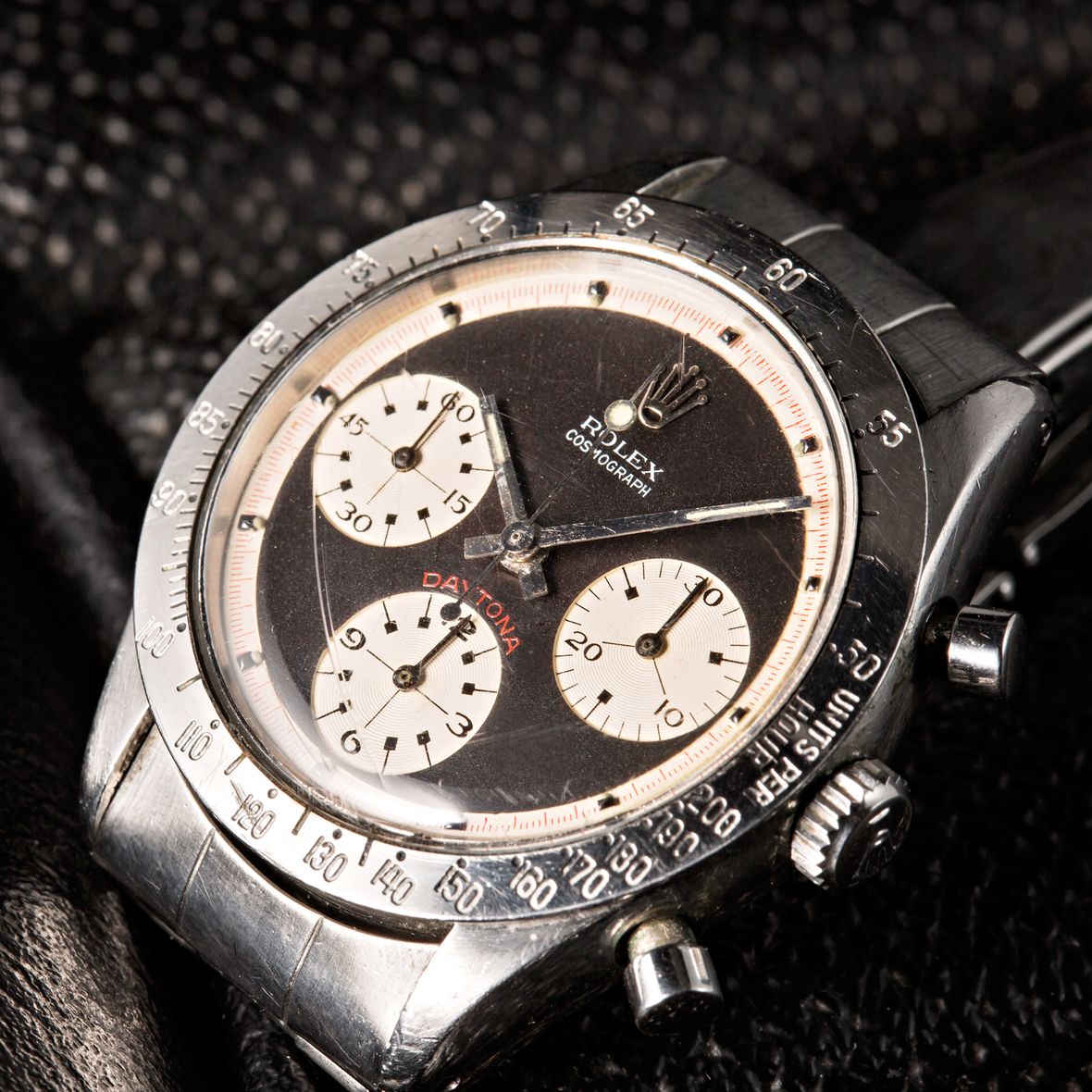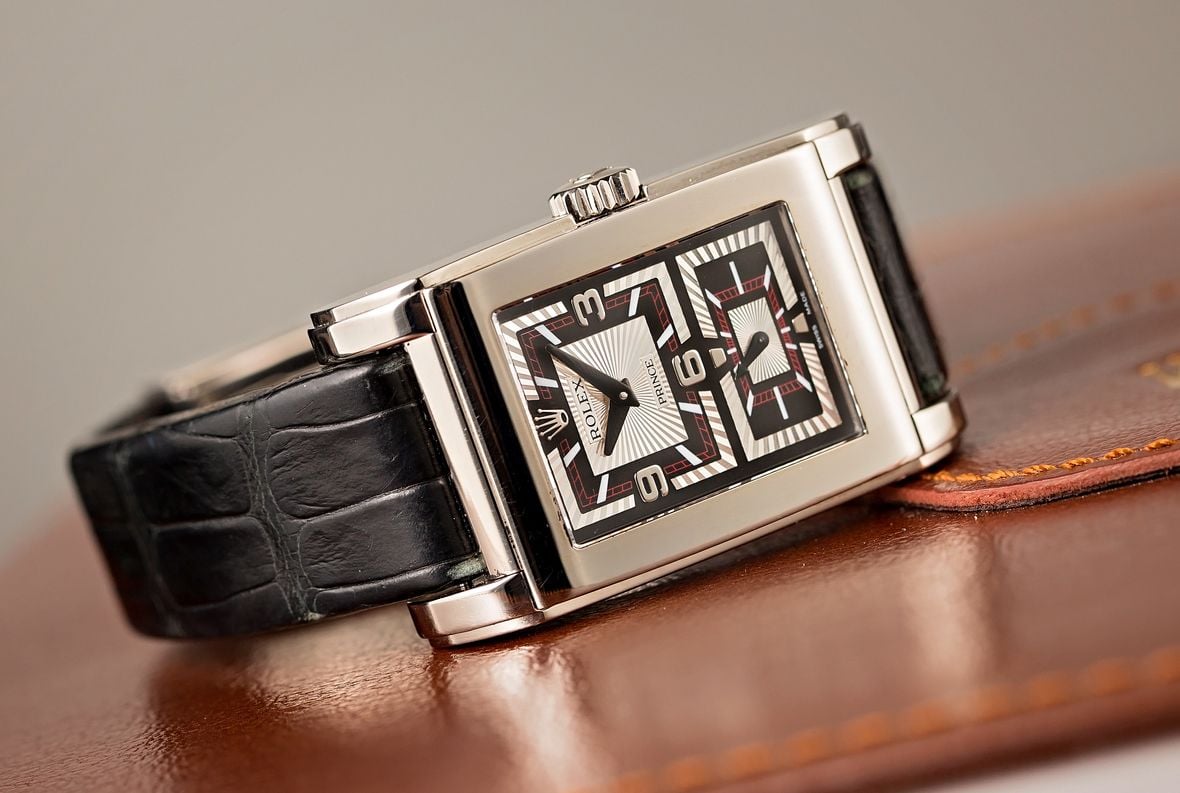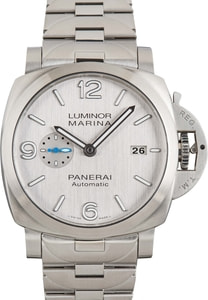The latest iteration of the Rolex GMT-Master II is produced under the 1267xx series, complete with the new Cal. 3285 Perpetual movement and a stunning set of features. During Baselworld 2019, Rolex introduced one of the most notable editions yet, the Rolex GMT-Master II 126719 in white gold. Produced with either a midnight blue or meteorite dial, the white gold Pepsi GMT is a unique iteration of the famed pilot’s watch.
In this review and buying guide, we will cover everything you need to know about the remarkable white gold Rolex GMT-Master II reference 126719BLRO, including its history, features, and price.
Rolex GMT-Master II Ref. 126719BLRO
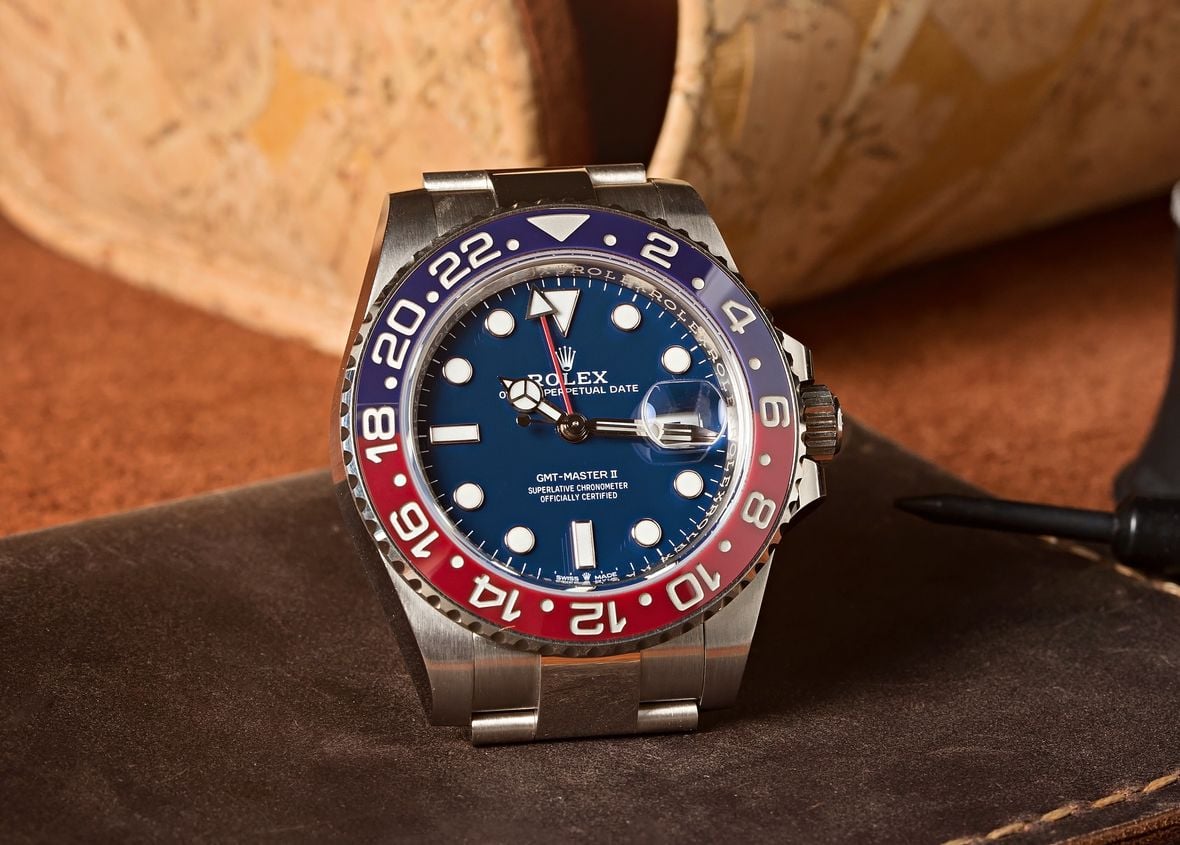
GMT-Master II 126719 Key Features:
– Production Years: 2018 – Present
– Case Size: 40mm
– Materials: 18k White Gold
– Functions: Time w/ Running Seconds, Date Display, GMT Functionality
– Dial: Midnight Blue or Meteorite w/ Luminous Hour Markers
– Bezel: Bidirectional, Red and Blue Cerachrom Insert w/ 24-Hour Scale
– Crystal: Sapphire (Flat w/ Cyclops Lens)
– Movement: Rolex Caliber 3285
– Water Resistance: 100 meters / 330 Feet
– Strap/Bracelet: Oyster Bracelet
– Retail Price: $38,250 (Blue Dial); $39,900 (Meteorite Dial)
Click here for our Ultimate Buying Guide on the Rolex GMT-Master II.

History of The Pepsi Rolex 126719
The Rolex GMT-Master debuted in 1955 with a red and blue Rolex Pepsi bezel, featuring a split-color insert that has since become one of the defining characteristics of Rolex’s legendary pilot’s watch. Initially developed as a tool watch for pilots, the red and blue insert mirrors the Pan Am Company’s colors (along with the attitude indicator on airplanes at the time). Although a number of other bezel colors have since been introduced, the Pepsi bezel remains one of the most iconic and sought-after. It was a cornerstone of the GMT collection until the mid-2000s when the Pepsi bezel was temporarily retired to make way for the updated 6-digit GMT-Master II generation.
Rolex discontinued the aluminum bezel inserts on the stainless steel GMT-Master II models in favor of the modern ceramic (aka “Cerachrom”) bezel. Rolex outfitted the first editions of the 6-digit GMT-Master II solely with solid bezel inserts because the brand had yet to perfect the technology required to produce a split-color insert from a single piece of ceramic. That all changed in 2013 with the stainless steel Batman GMT-Master II ref. 116710BLNR, which hit the market with a blue and black bezel. It was the very first Rolex with a two-tone ceramic bezel and also represented the first new bezel color option to be added to the collection since the very first GMT-Master II appeared in 1982 and introduced the red and black “Coke” bezel.
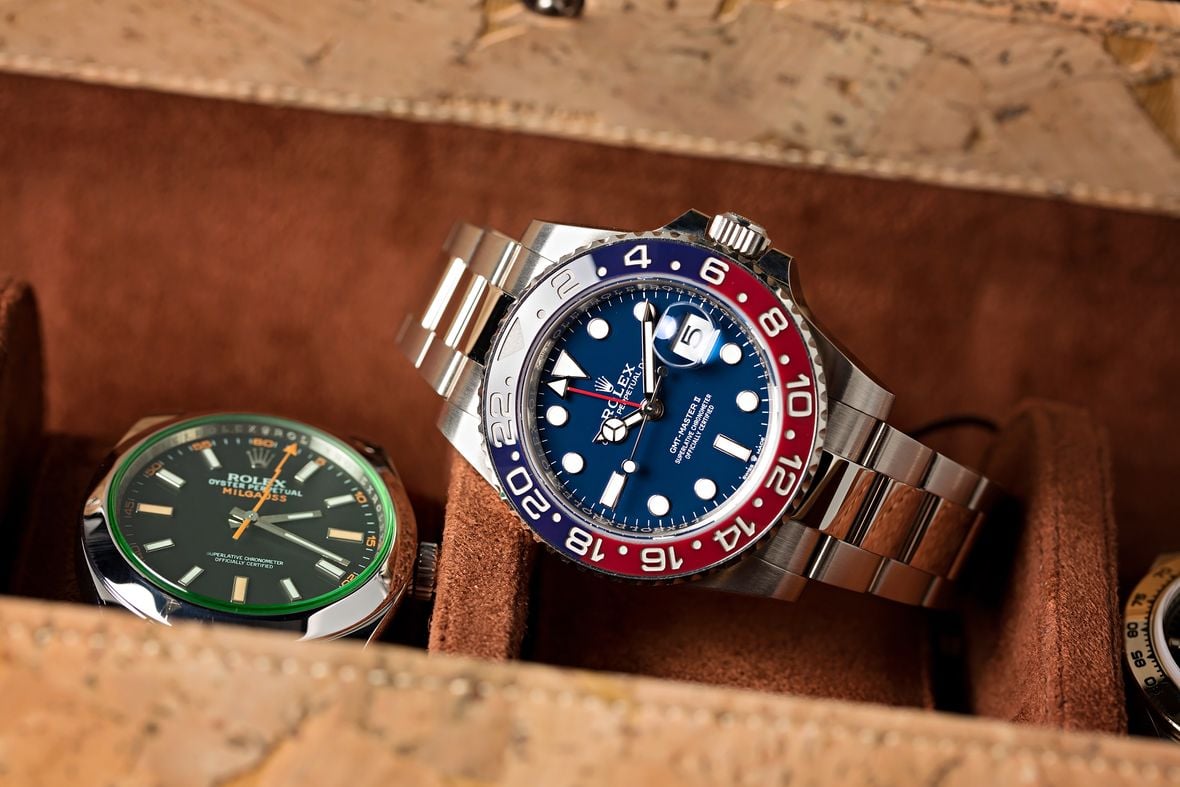
Ceramic Pepsi Bezel
The following year in 2014 marked the Pepsi GMT bezel’s triumphant return. Rolex released the first Pepsi bezel made from Cerachrom in the form of the 18k white gold ref. 116719BLRO on an Oyster bracelet. However, it would still be several more years until the company would satisfy collectors’ demands for a ceramic Pepsi bezel on a stainless steel GMT-Master II watch. Some collectors speculate that Rolex released the first ceramic Pepsi bezel in gold rather than steel to keep production low while the brand perfected its production process of the split-color Cerachrom bezel. While understandable, this move still angered many collectors who wanted a ceramic Pepsi bezel, but who did not want to pay the significant sum for a solid gold watch.
The highly-anticipated release of a stainless steel model came in 2018 when Rolex rolled out a brand new generation of GMT-Master II with the 1267xx series. Included with that release was the reference 126710BLRO in stainless steel with the red and blue “Pepsi” bezel, followed by the blue and black “Batman” bezel (ref. 126710BLNR) the following year in 2019. Both editions were initially only offered on the 5-link Jubilee bracelet, with the classic 3-link Oyster bracelet being reserved for the white gold model; however, that changed in 2021 when Rolex made both steel models available with the option of either Oyster or Jubilee bracelets.
Currently, the Pepsi GMT-Master II is available in either Oystersteel or 18k white gold. The Oystersteel ref. 126710BLRO features either an Oyster or Jubilee bracelet and is exclusively fitted with a black Maxi dial. Meanwhile, the white gold ref. 126719BLRO is only offered on the 3-link Oyster bracelet and can be fitted with either a Midnight Blue or Meteorite dial. Despite their differences, both Pepsi GMT-Master II references are powered by the same Caliber 3285 movement and offer identical functionality and timekeeping performance.
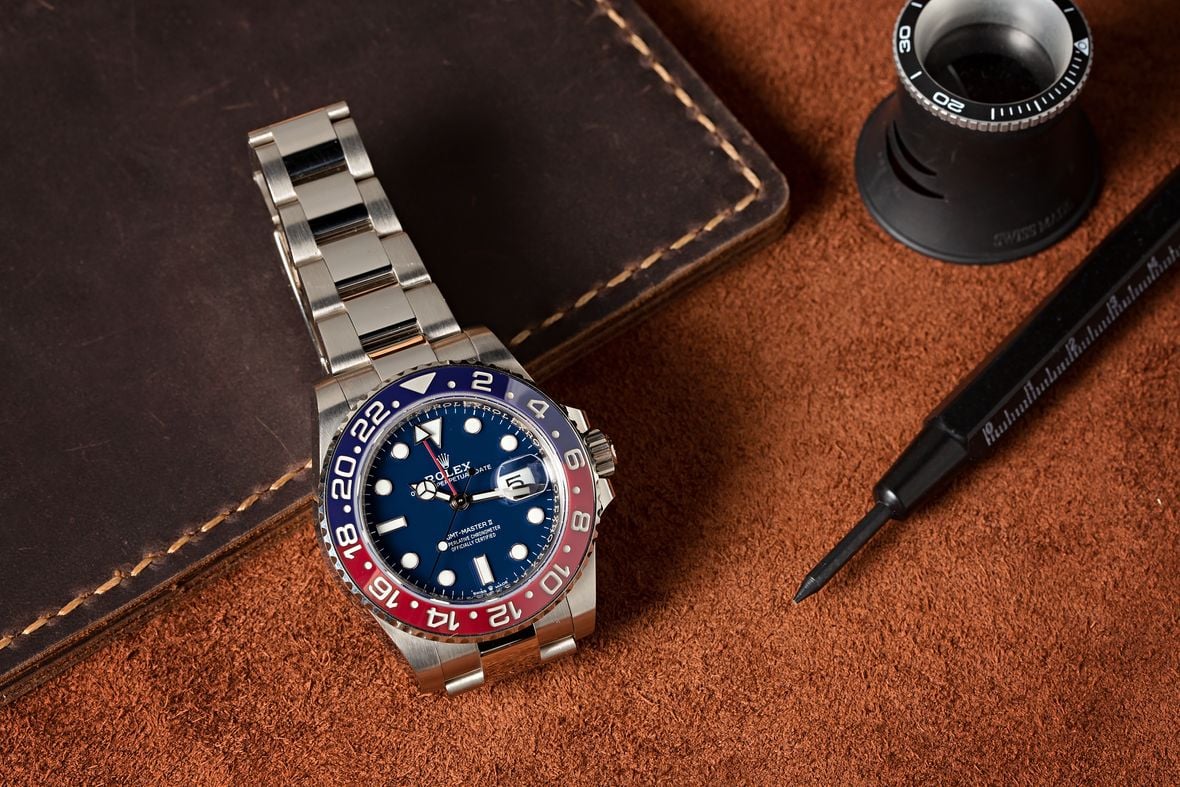
Rolex Pepsi GMT-Master II 116719BLRO vs. 126719BLRO
Despite the release of the 1267xx series in 2018, the white gold version (ref. 116719 BLRO) that initially brought back the Pepsi bezel in 2014 was not completely discontinued. Instead, Rolex updated the white gold version to feature a midnight blue dial and added the then-new Caliber 3285 movement. To signify the changes, the reference number was also updated (now ref. 126719 BLRO), and Rolex even offered owners of the older ref. 116719BLRO the option to exchange their black dials for the Midnight Blue version found in the updated white gold model.
One year later in 2019, Rolex added another dial option to the reference 126719BLRO. While the watch itself was the exact same as the model that had debuted the year before, buyers now had the option between the standard Midnight Blue dial or a striking meteorite dial, which significantly boosted overall interest in the watch. While both white gold Pepsi GMT-Master references feature the same configuration, including the Oyster bracelet, ceramic bezel, and 40mm case, there are some differences between them. In addition to slightly updated case proportions, the ref. 126719 runs on the new-generation Caliber 3285 movement and features a tiny coronet insignia between the words “Swiss” and “Made” placed directly below the 6 o’clock hour marker.
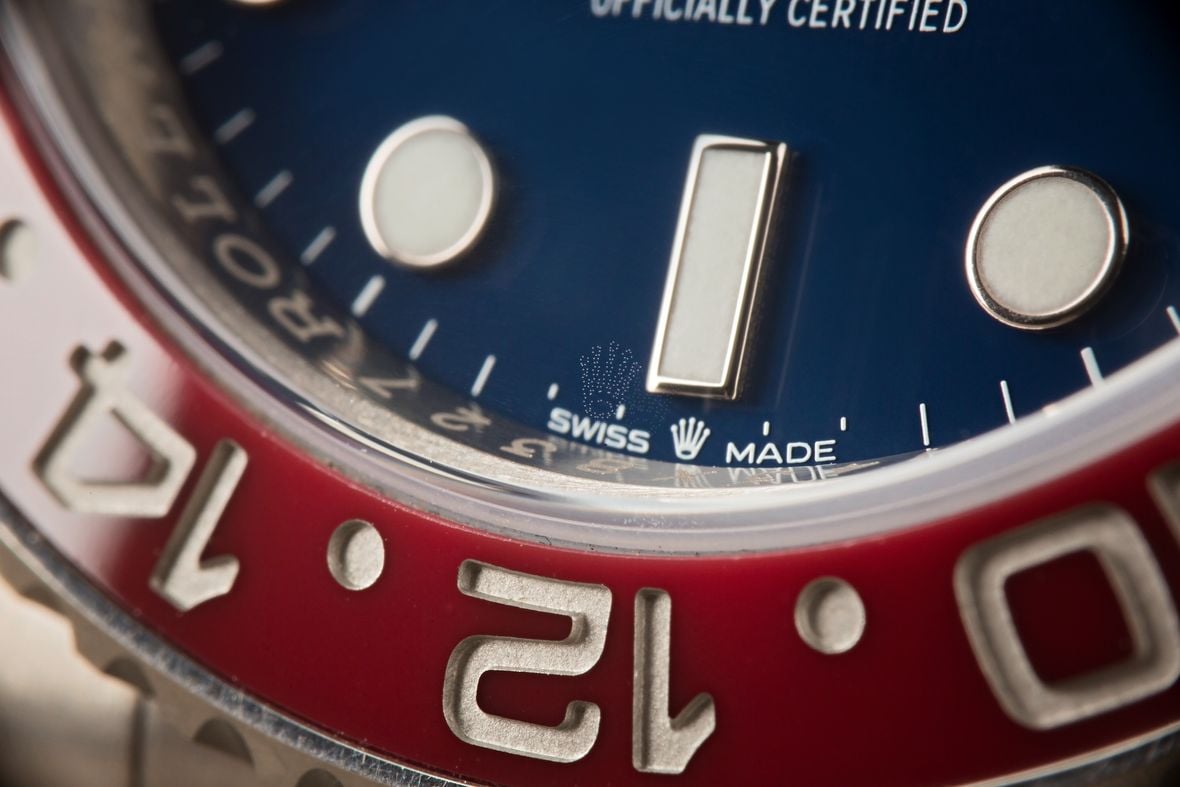
Midnight Blue dial
Except for a few rare examples, such as the “Albino” GMT-Master ref. 6542 and, more recently, the Meteorite dial, the Rolex GMT collection has almost exclusively been offered with dark-colored dials. The first version of the white gold Pepsi GMT-Master II with a blue dial appeared in 2018 with the reference 126719BLRO and this watch still remains in production and is offered alongside its Meteorite dial sibling.
With that in mind, due to the fact that Rolex offered owners of the older ref. 116719BLRO the option of having their black dials replaced with blue ones, it is not uncommon to find examples of the previous white gold Pepsi GMT-Master II that are now fitted with Midnight Blue dials. If you have the budget to invest in a white gold GMT but don’t love the Meteorite dial’s signature aesthetic, the Midnight Blue edition is probably the best option for your wrist.
As a modern Rolex sports watch, the time is displayed by applied white gold “Maxi” indices filled with Chromalight. Rolex’s proprietary luminous material glows blue in the dark for up to 8 hours yet remains crisp white during the day. The Rolex GMT-Master II 126719 also includes the date at the brand’s signature 3 o’clock location, which is magnified by the obligatory Cyclops lens on the crystal. Also present on the dials of both the Midnight Blue and Meteorite editions is a small Rolex crown just below the 6 o’clock position, which distinguishes these models as being members of the new updated generation.

The Meteorite Dial: Out of this World
The vast majority of meteorite dials on the market originate from a single iron-nickel alloy meteorite, which scientists believe hurtled through our atmosphere millions of years ago. The infamous space rock, now known as the Gibeon Meteorite, crashed in what is now Namibia and scattered the rock’s fragments over a large area measuring roughly 240 miles by 75 miles. Most of the meteorite’s pieces are located near the village of Gibeon, where the local Nama people first discovered it. However, it wasn’t until 1836 when English captain J. E. Alexander had samples of the meteorite examined that the rock was confirmed to be of extraterrestrial origin.
This rare material is incredibly popular in jewelry and watchmaking for the striking Widmanstätten pattern that the nickel-iron crystals produce. The striations seen on the Rolex 126719 dial were formed by Kamacite and Teanite, which appear as ribbons and fine grain material. This crystal formation was created as the rock (which was once molten) cooled as it traveled through space. The meteorite slices are then treated with chemicals such as nitric acid or ferric chloride to bring out their natural crystalline pattern. Because of the Widmanstätten pattern’s geometric nature, the meteorite needs to be sliced at the correct angle to achieve the design seen on the GMT-Master II, and because it is a naturally occurring pattern, no two Rolex meteorite dials will be the same.
The Daytona and Day-Date became the first Rolex watches to display the time on a meteorite dial, followed by the Datejust, Pearlmaster, and GMT-Master II. There is also a small slice of meteorite that depicts the moon on the Rolex Cellini Moonphase, although its use of meteorite is limited to a single element rather than the entire dial itself. Gibeon Meteorite is one of the rarest materials found on Earth, and any Rolex watch featuring the material is likely to command a premium for its rarity alone. In addition to being the only GMT-Master II ever to feature a meteorite dial, the ref. 126719BLRO is also the only example of a modern GMT with a light-colored dial.
Rolex was among the first watchmaking companies to incorporate meteorite into its timepieces, although the trend is continuously catching on with more manufacturers. The Gibeon Meteorites are now protected by law, and it’s prohibited to remove any of their material from where they are located. Luckily, Rolex acquired its slices of the meteorite before the law was passed, and the brand creates meteorite dials on a very limited basis, only further adding to their exclusivity.
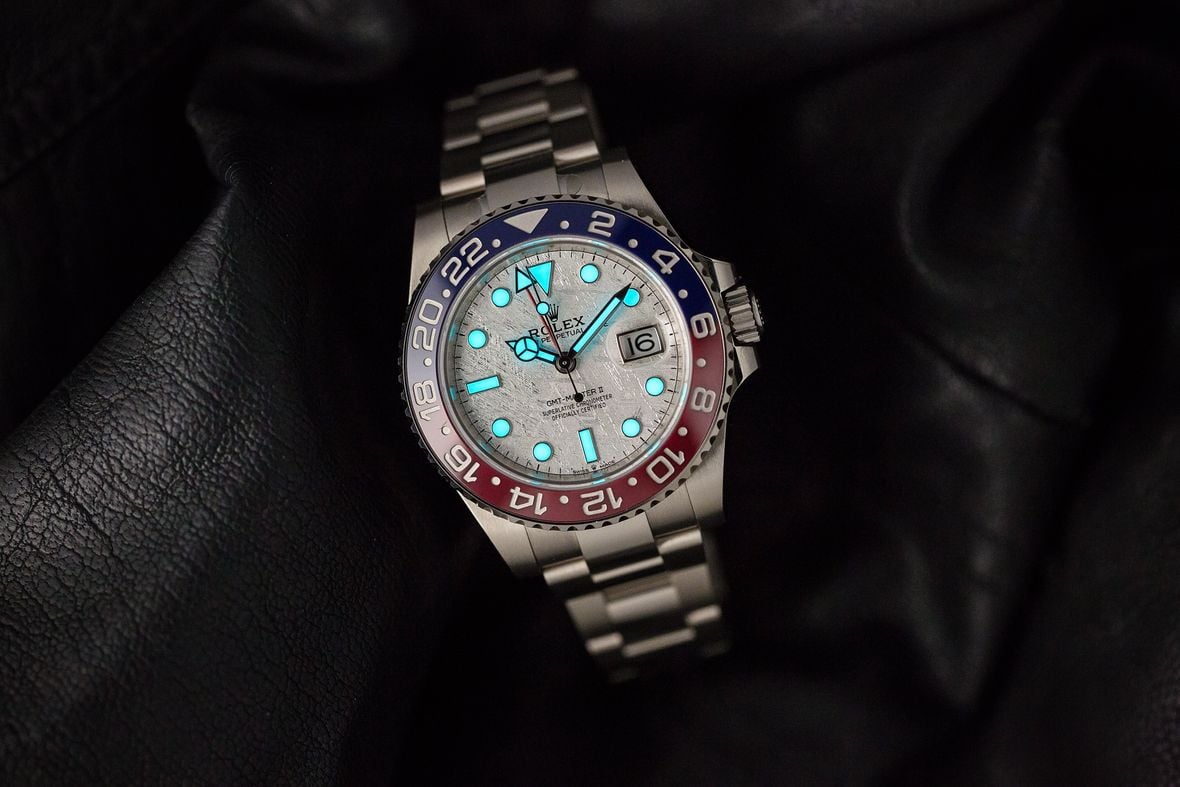
Rolex Caliber 3285 Movement
The 31-jewel Rolex Caliber 3285 Perpetual movement represents the latest in the company’s watchmaking technology. First released at Baselworld 2018, it replaces the Caliber 3186 and brings with it an upgraded Chronergy escapement with a unique skeletonized structure that allows for improved efficiency over the previous generation.
The unique design of Rolex’s proprietary Chronergy escapement is reportedly up to 15% more efficient, and when paired with a redesigned mainspring and barrel, it allows the Cal. 3285 to offer users a longer 70-hour power reserve (an increase from the 48 hours provided by its predecessor). The movement keeps the same paramagnetic blue Parachrom hairspring but adds Paraflex shock absorbers and represents a completely new generation of GMT movements, rather than just an evolution of the outgoing generation. While efficiency has been improved, timekeeping accuracy remains the same, and the Caliber 3285 boasts the same “Superlative Chronometer” certification that promises -2/+2 seconds per day (after casing).
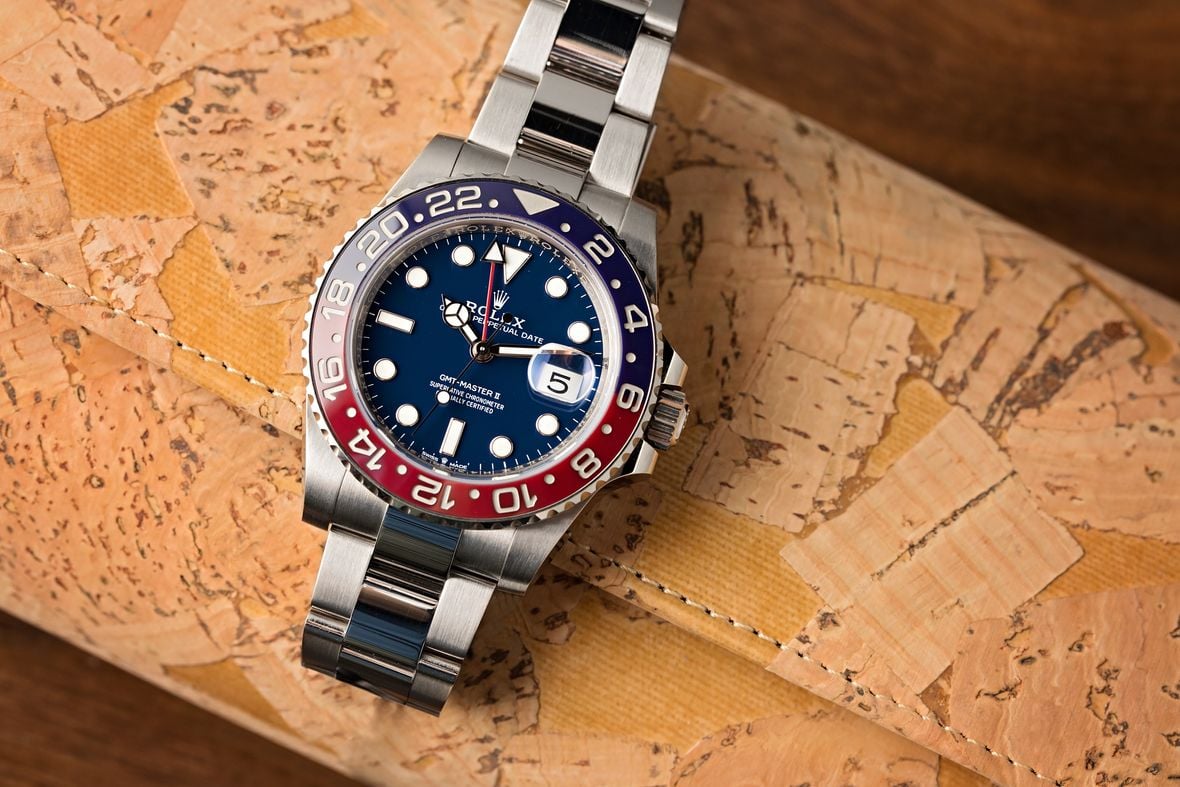
Rolex 126719BLRO Case and Bracelet
The Rolex ref. 126719 features a solid 18-karat white gold case and bracelet. There is an impressive heft to the watch that can only be attributed to the use of a considerable amount of gold. The Oyster case consists of a Monobloc middle case, a Triplock waterproof screw-down crown, a scratch-resistant sapphire crystal, and a solid screw-down caseback. Like all other Rolex GMT-Master II watches, the reference 126719BLRO is water-resistant up to 100 meters, which is more than enough protection for swimming, travel, and daily wear.
Accompanying the white gold case is Rolex’s iconic Oyster bracelet with flat, three-piece links and an Oysterlock clasp, which features an additional latching mechanism to prevent accidental opening. The Oysterlock clasp also features Rolex’s convenient Easylink extension system that allows the wearer to instantaneously adjust the bracelet’s length by approximately 5mm, completely on the fly and without the use of any tools. This feature is particularly useful and serves as a convenient way to maintain a custom fit for the bracelet as your wrist fluctuates throughout the day due to humidity and other factors.
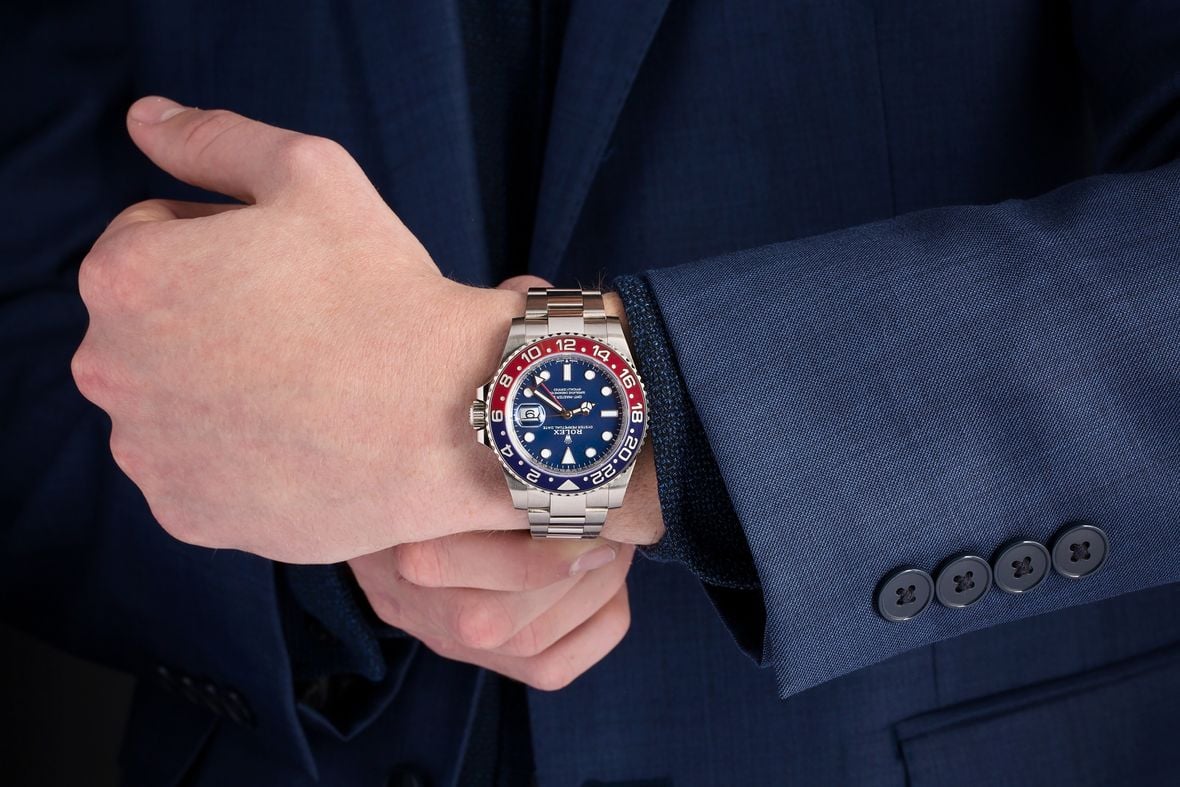
How Much is the Rolex GMT-Master II 126719BLRO?
It isn’t hard to see why so many watch enthusiasts value the Rolex GMT-Master II. It offers the convenience of an added time zone with the durability of a sports watch, all while simultaneously providing the exclusivity and prestige that accompanies owning any timepiece made by Rolex. Widely considered to be some of the best luxury watches in existence, all Rolex models are built to last a lifetime, and many become heirlooms items that get handed down from one generation to the next.
As a solid gold watch, the Rolex GMT-Master II ref. 126719BLRO is one of the most expensive options available and represents the most expensive standard-production model from the current GMT-Master II lineup. The retail price of the standard Midnight Blue dial version is $38,250, while the variant with the meteorite dial costs $39,900. However, as is often the case with highly desirable Rolex models, demand far exceeds supply at a retail level and secondary market prices are significantly higher than their original retail values.
At the present time, nearly all examples of the reference 126719 GMT-Master II are trading hands for values in excess of $40,000 and prices can reach north of $60,000 for the versions fitted with meteorite dials. Historically, it has primarily been Rolex’s stainless steel models that sell for a premium on the open market, but due to the insane popularity of the Pepsi GMT, nearly all current-production examples of Rolex’s famous pilot’s watch are trading hands for values in excess of their brand-new retail prices.
